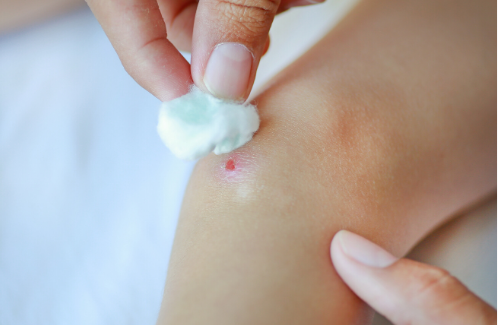Cotton has a number of properties that make it well-suited to the healthcare industry. It is soft, absorbent, and hypoallergenic, and it responds well to all three major sterilization methods (steam, ethylene oxide, and gamma radiation). Today, we’ll take a look at the role of cotton in today’s medicine and healthcare fields, examining why this fiber is a favorite among so many doctors and nurses.
Cotton for the Medical Field
Cotton is typically used in one of four capacities within the medical field:
- Non-implantable products are cotton products that are applied externally; for example, dressings, bandages, padding, gloves, facemasks, and medical gowns
- Implantable products are cotton products that are used inside the body; for example, tampons
- Extracorporeal products are cotton products that are used outside of the body during procedures; for example, debridement sponges
- Hygiene products are cotton products that are used to keep the body clean; for example, baby wipes, diapers, feminine hygiene pads, and antiseptic wipes
In the healthcare industry, cotton may be used in its purest form as 100% cotton, as a fabric composite, or blended with other fibers.
Cotton Wool for Medical Use
“Cotton wool” is a term used to refer to cotton in its softest and fluffiest form – think cotton balls. Due to its absorbency, it is most often used for cleaning the skin, bathing wounds, or applying liquids and creams.
Common applications of cotton wool in medicine include:
- Cotton wool balls
- Cotton roll
- Q-tips
- Cotton pads
- Gauze
- Dressings and bandages
The History of Cotton in Medicine
Cotton has been used in medicine since the Middle Ages. Writers of that time described the use of raw, untreated cotton fibers in several medical applications, including forming pads over dressed wounds, protecting burns and scalds, and serving as an early “drainage tube” by keeping the edges of wounds open. At the time, however, cotton was not purified and thus was risky in such applications – a far cry from the easily sterilized cotton products that hospitals use today.
By the mid-nineteenth century, physicians were starting to use “carded cotton” – cotton carded into narrow fleeces – in the treatment of burns and other skin conditions. This type of cotton was cleaned and washed prior to use, so it was safer than its raw, untreated predecessor.
As the eighteenth century neared its end, more doctors began to rely on bleached cotton for use in treating their patients. This paved the way for the ultra-safe, purified cotton that we know and love today.
The Fiber of Choice for Healthcare and Medicine
Cotton has come a long way since its early applications in the medical field. Today, it is ubiquitous in modern hospitals and clinics, and stands among the safest fibers in the world. Cotton has proven to be an effective tool for treating and protecting the health of patients, in both its absorbent and nonabsorbent forms. We encourage you to read more about our totally chlorine-free (TCF) cotton purification process and discover why so many physicians trust cotton to get the job done.
